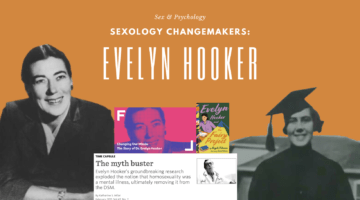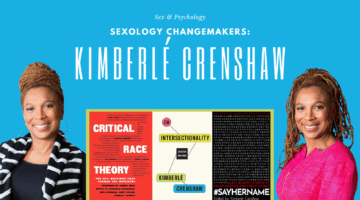Are Our Brains ‘Wired’ For Monogamy Or Non-Monogamy?
August 11, 2021 by Justin Lehmiller
Why does monogamy work for some people but not for others? Research suggests that it might have something to do with the way our brains are ‘wired.’
Consider a study in which 20 heterosexual men underwent brain scans while looking at different types of images. Some of the images were sexual, depicting couples engaged in penile-vaginal intercourse. Others were romantic, showing clothed men and women engaged in non-sexual intimacy. Yet others were neutral, depicting nature scenes or imagery of people engaged in non-romantic and non-sexual activities.
Half of the men were “highly monogamous.” They’d never had a sexually open relationship, nor had they committed infidelity. They also reported having a lower than average number of lifetime sexual partners and said they rarely fantasized about anyone other than their relationship partner.
The other half were “highly non-monogamous.” These men reported having had experience with both sexually open relationships and infidelity. They reported a greater than average number of sex partners in their lifetime and said they had a preference for having multiple partners at the same time.
The results showed that, regardless of relationship orientation, men showed substantial activation of the brain’s reward pathways when exposed to sexual images. Put another way, and not surprisingly, pretty much everyone found the sexual images to be rewarding.
By contrast, monogamous men (relative to non-monogamous men) showed substantially greater activation of the brain’s reward system in response to romantic images. The areas of the brain that were active while monogamous men were viewing romantic images were largely the same as the ones activated when they viewed sexual images.
Put another way, monogamous men processed romantic and sexual images in a similar way—and found both types to be very rewarding.
For non-monogamous men, however, they seemed to be processing romantic images in a somewhat different way. Unlike the monogamous men who just showed a general reward response to the romantic images, non-monogamous men had brain regions active that were involved in higher-order cognitive processing, suggesting that they were studying and thinking about those images.
These findings suggest the possibility that different people might be predisposed to different styles of mating based on the way their brains are ‘wired.’ In other words, perhaps tendencies toward monogamy vs. non-monogamy are rooted in brain structure.
Of course, other explanations are possible. For instance, perhaps having more practice or experience with monogamy vs. nonmonogamy “rewires” the brain. In other words, we might be observing the outcome rather than the cause in this case—and with correlational studies, that’s something you can never tell with certainty.
More research is needed to explore this limitation—and also to replicate the findings in larger and more diverse samples (e.g., would we see similar results across gender, sexuality, and other demographic features?). Further, it would be worth exploring whether the brain responses of non-monogamous men vary based on the type of non-monogamy they practice. In this study, all of the non-monogamous men had been both consensually and non-consensually non-monogamous. So what about men who only have experience with one or the other? Do their brain responses differ?
While it’s probably best to consider these results preliminary, they do suggest the possibility that we might have a relationship orientation ‘wired’ in the brain, which would mean that different people might be predisposed to different mating styles.
Want to learn more about Sex and Psychology? Click here for more from the blog or here to listen to the podcast. Follow Sex and Psychology on Facebook, Twitter (@JustinLehmiller), or Reddit to receive updates. You can also follow Dr. Lehmiller on YouTube and Instagram.
To learn more about this research, see: Hamilton, L. D., & Meston, C. M. (2017). Differences in neural response to romantic stimuli in monogamous and non-monogamous men. Archives of Sexual Behavior, 46(8), 2289-2299.
Image Source: 123RF

Dr. Justin Lehmiller
Founder & Owner of Sex and PsychologyDr. Justin Lehmiller is a social psychologist and Research Fellow at The Kinsey Institute. He runs the Sex and Psychology blog and podcast and is author of the popular book Tell Me What You Want. Dr. Lehmiller is an award-winning educator, and a prolific researcher who has published more than 50 academic works.
Read full bio >


